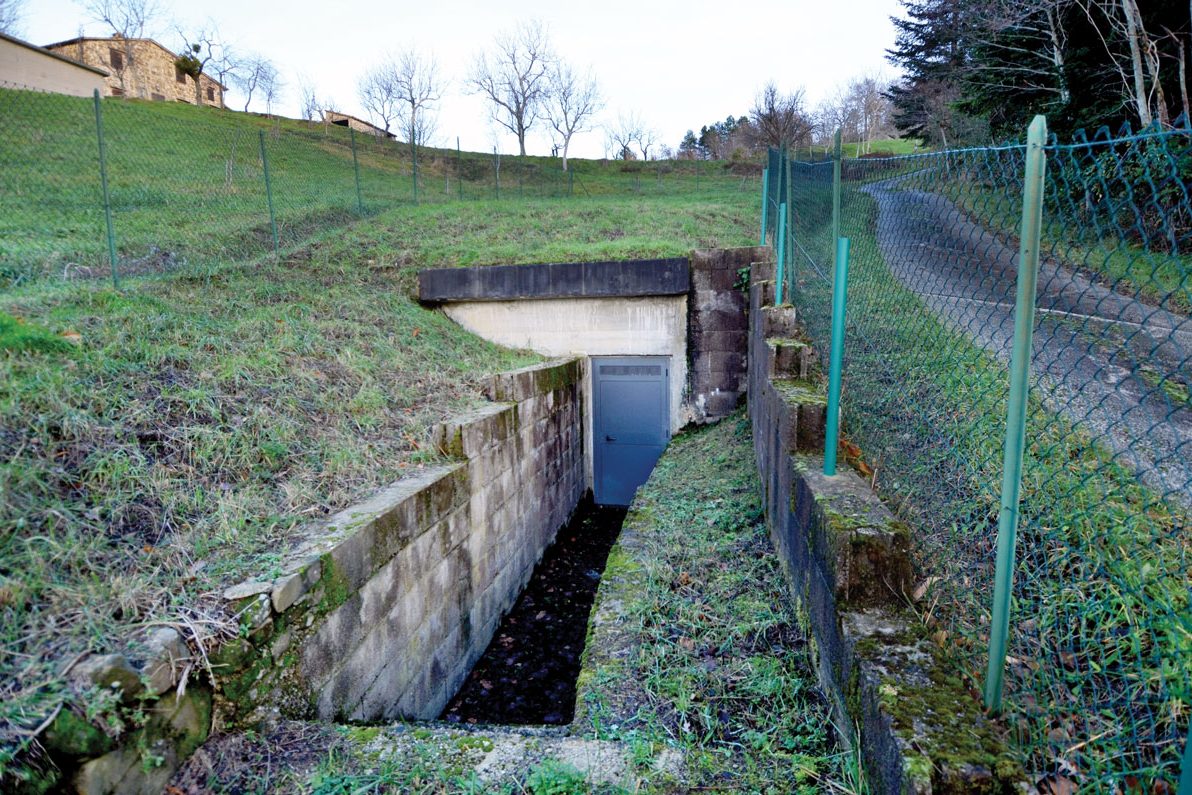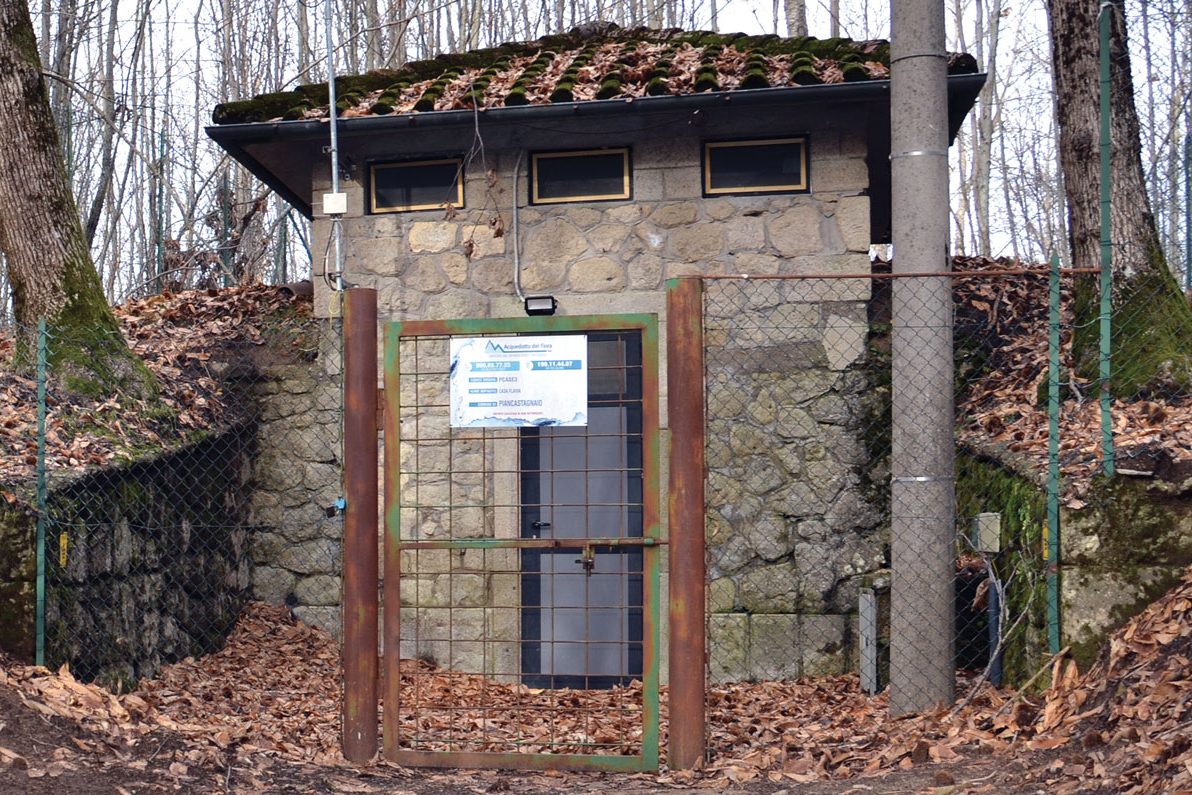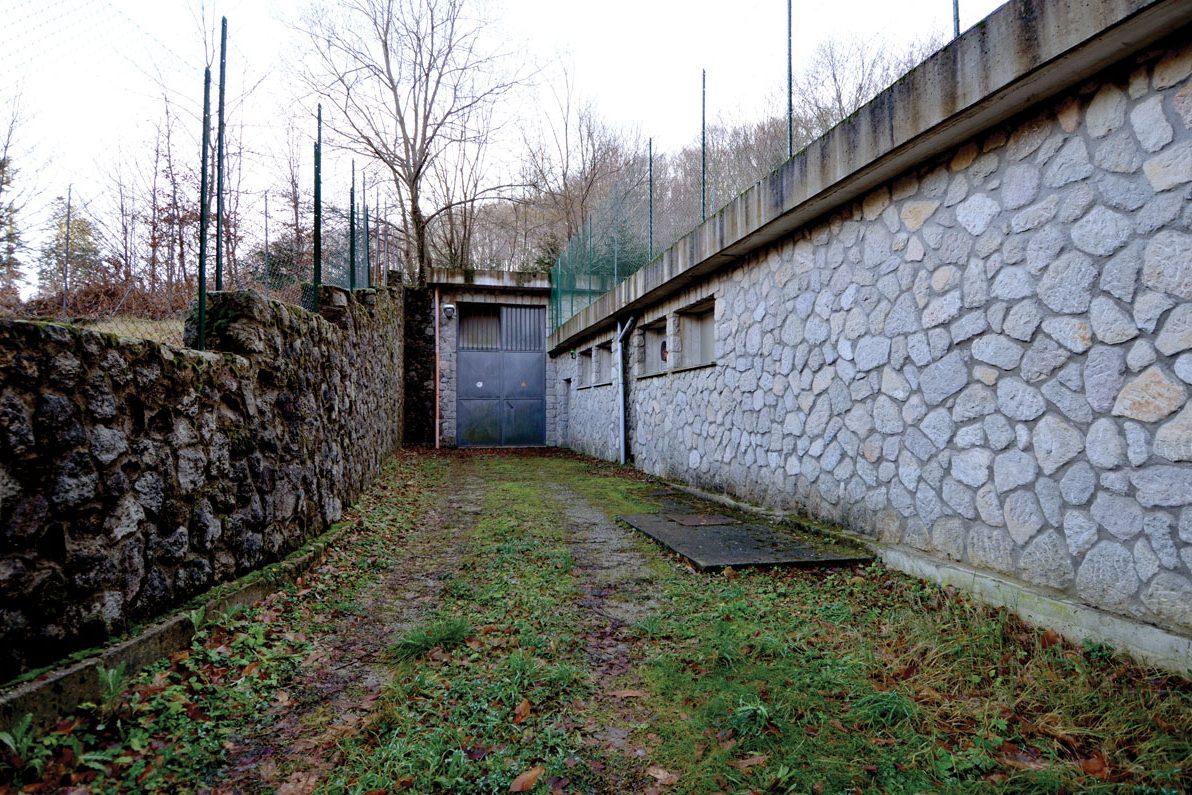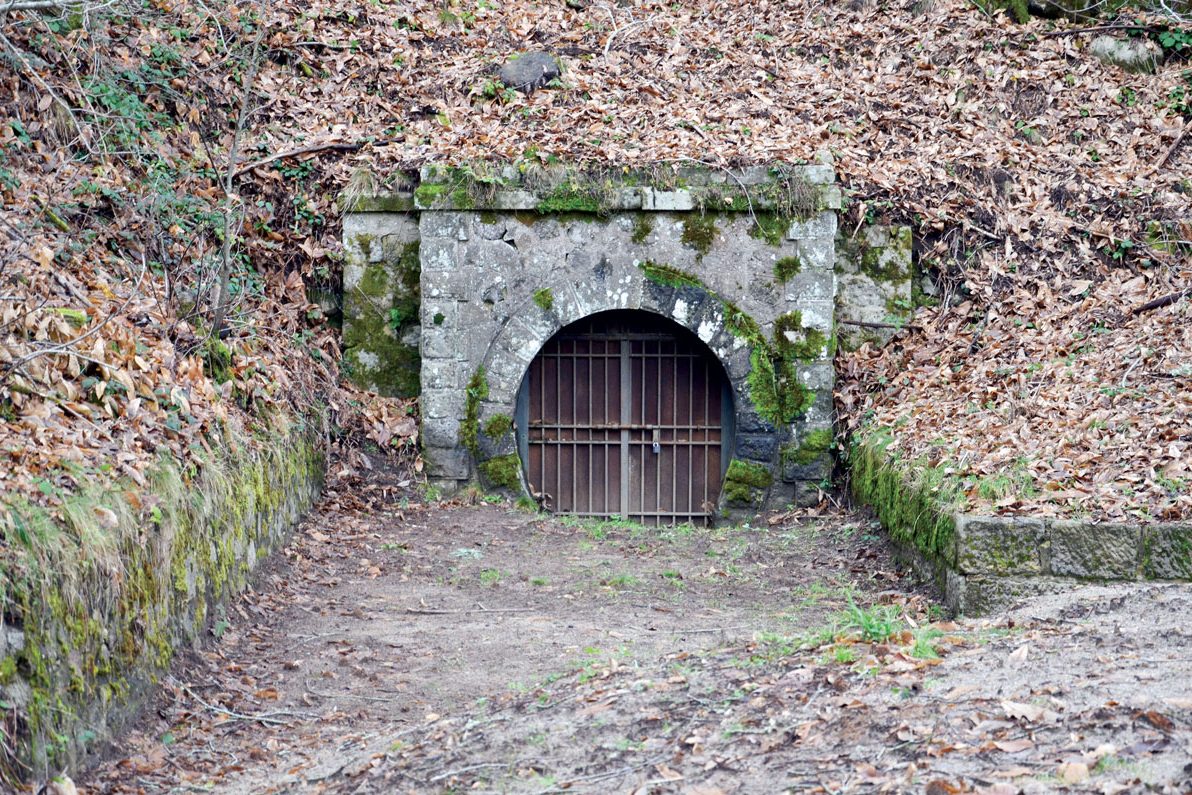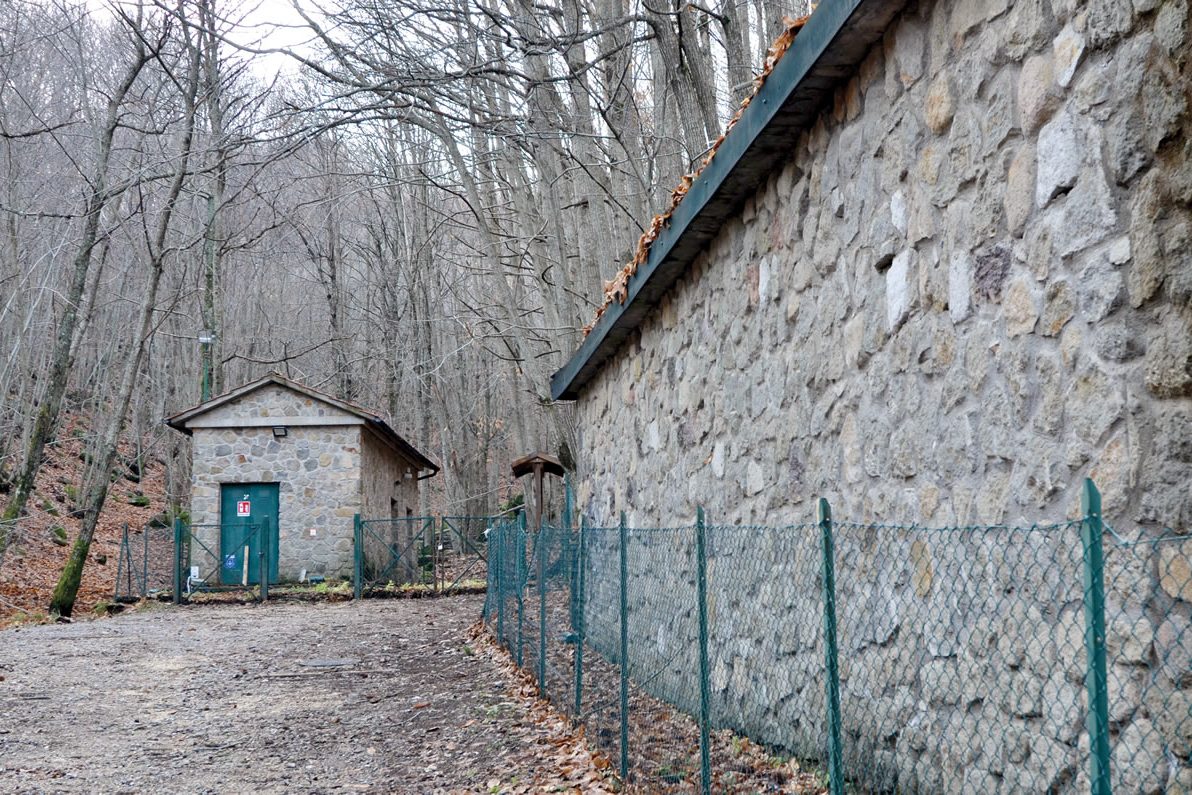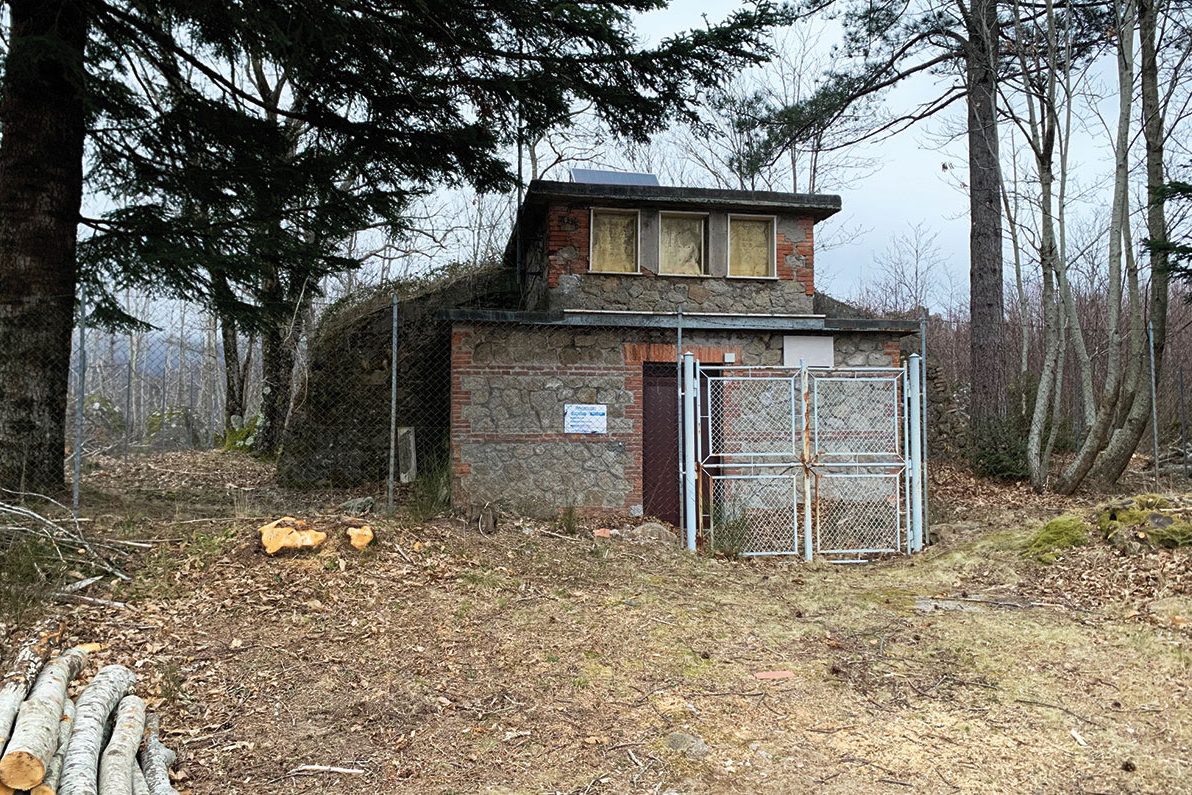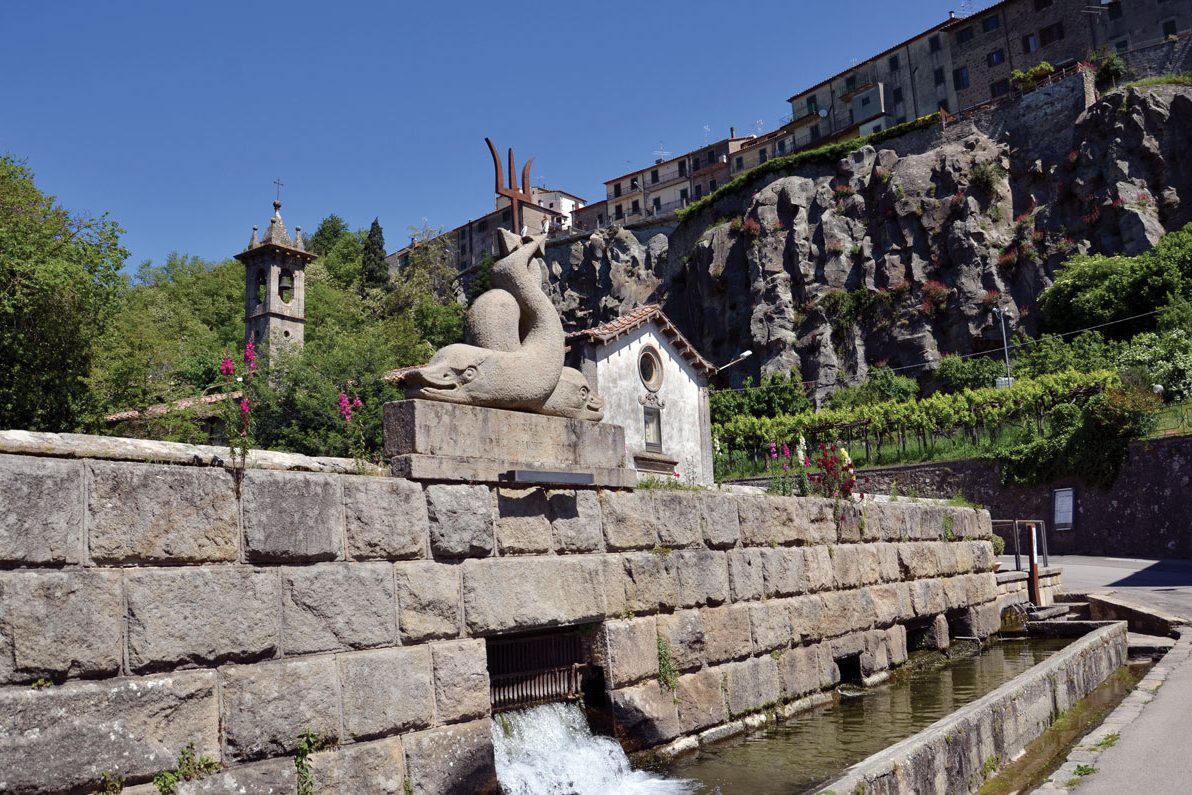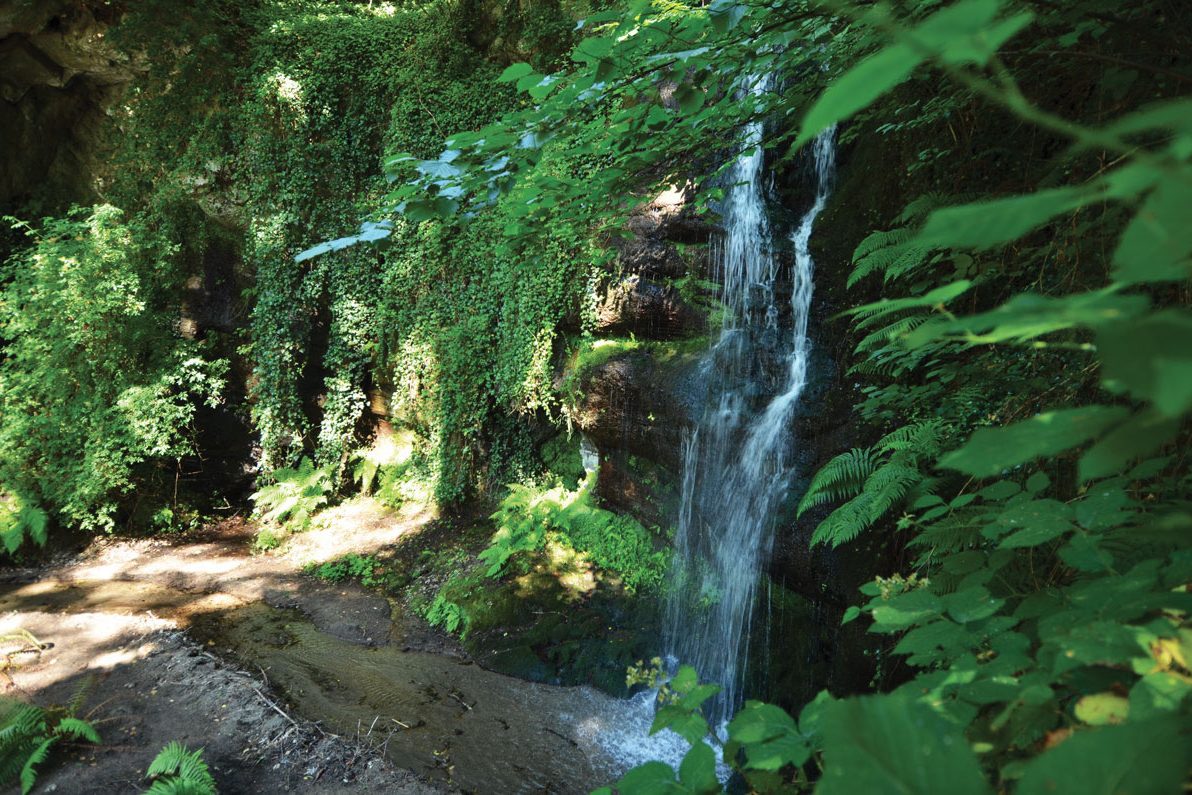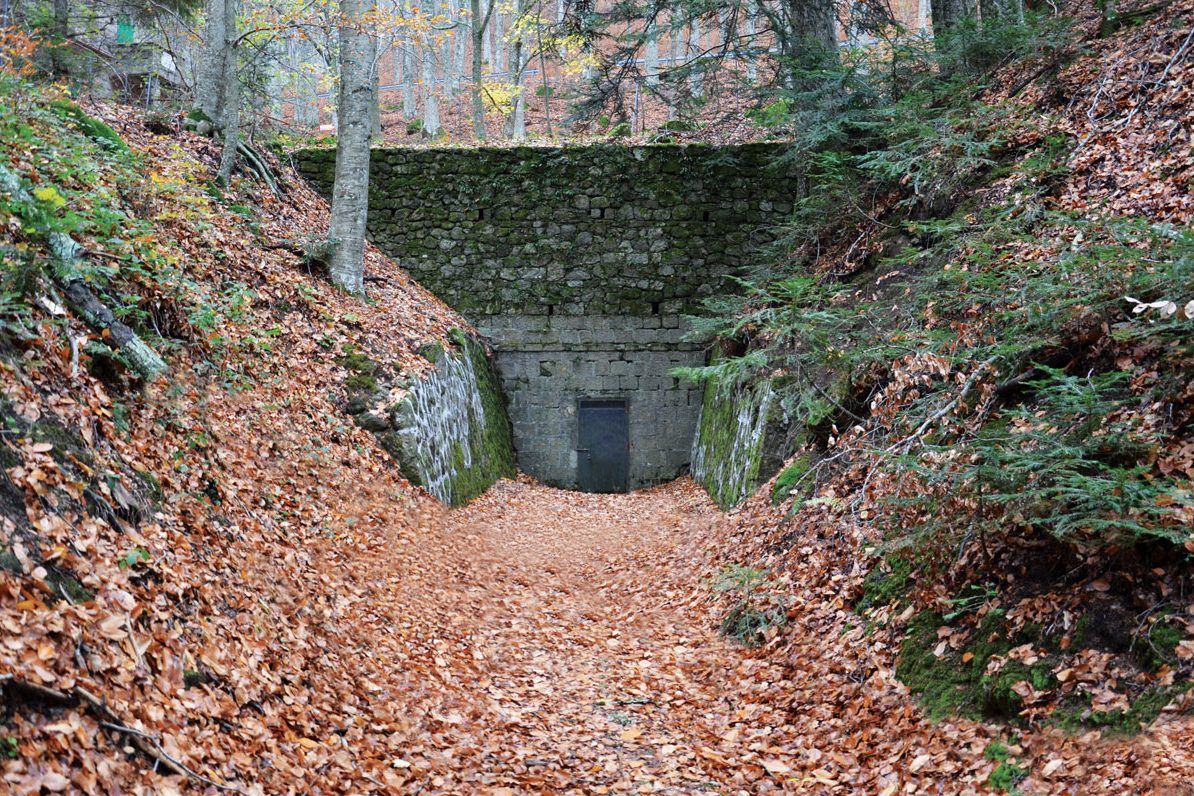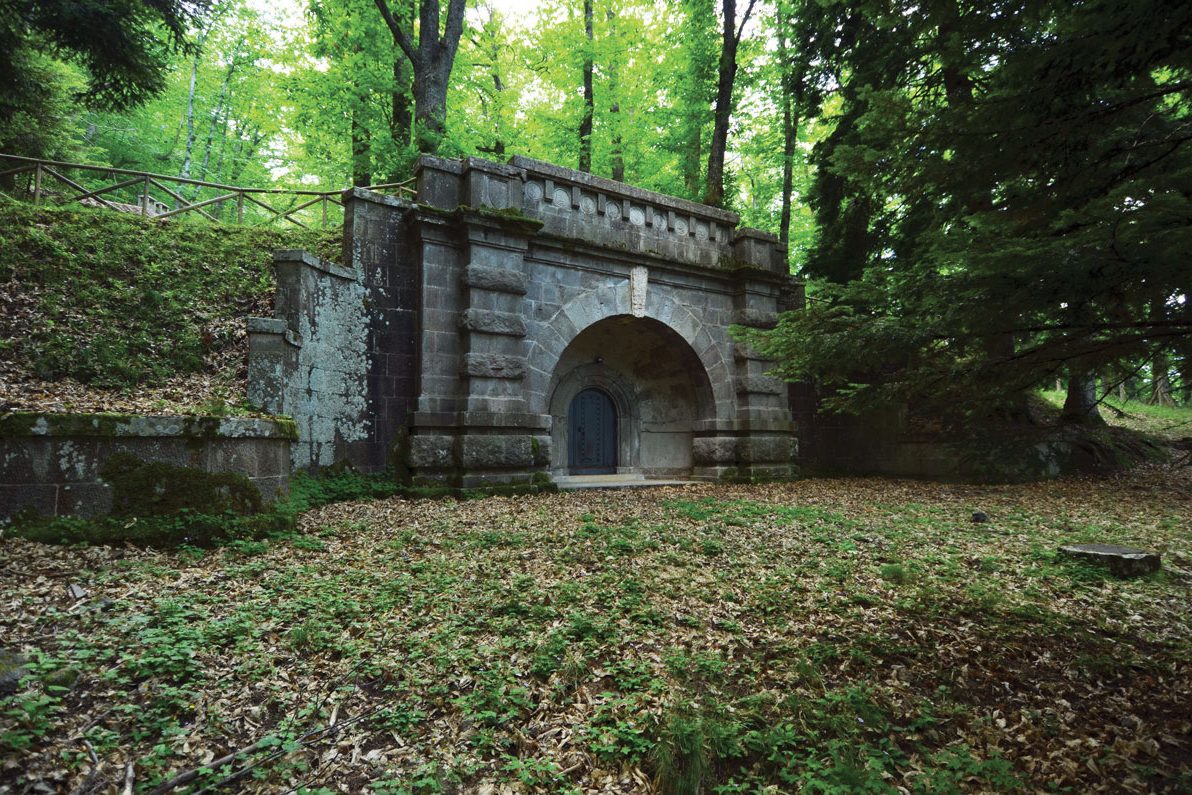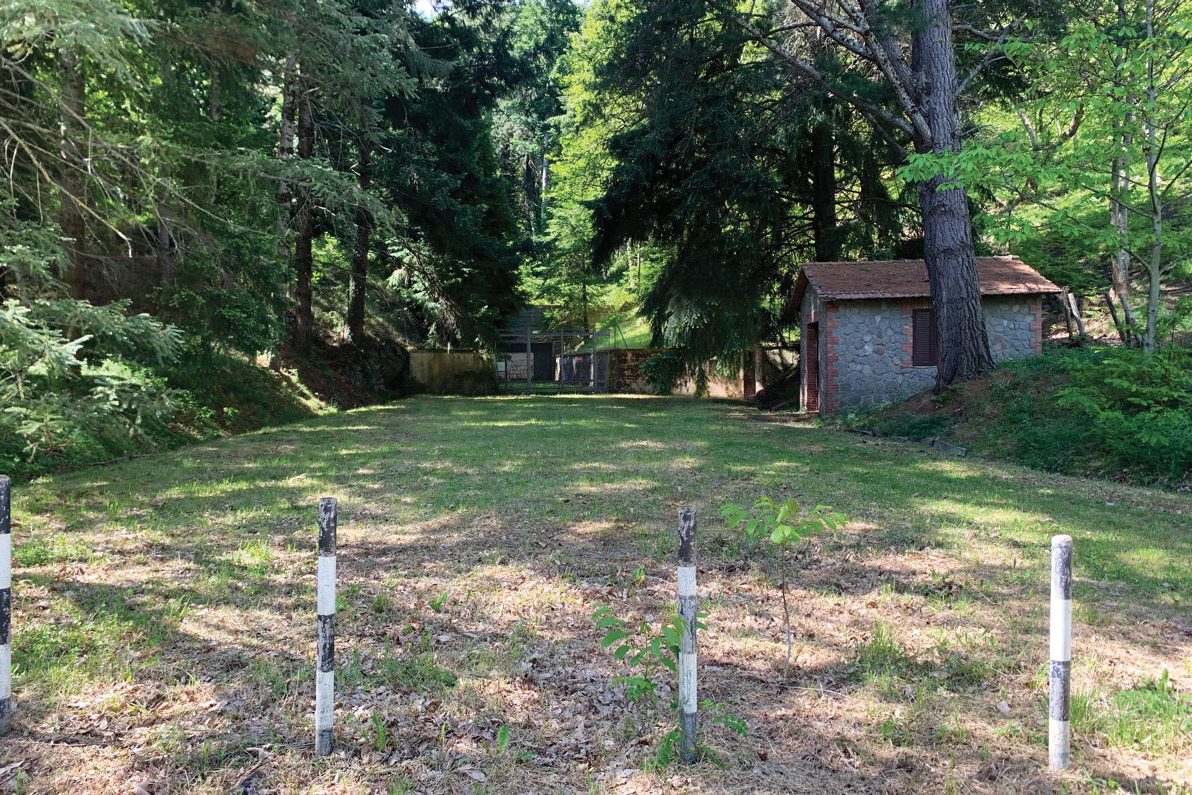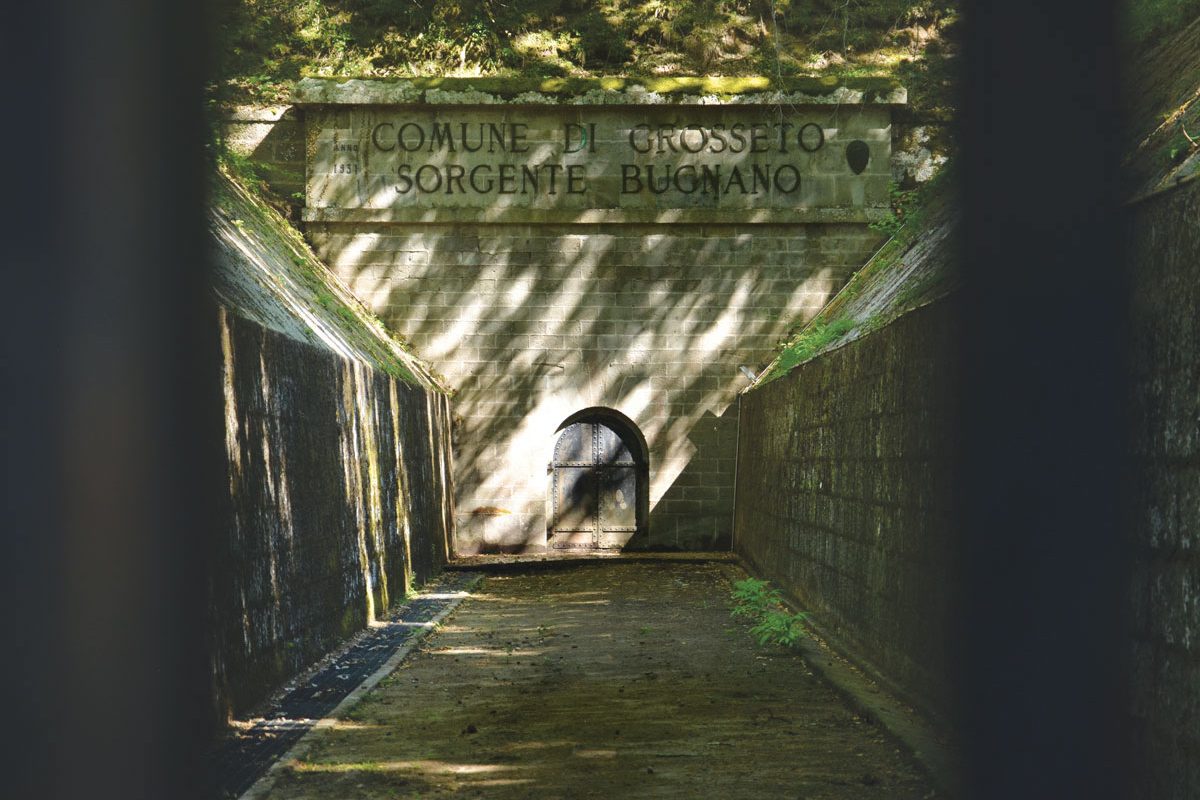The spring is located at 560 metres above sea level, in the municipality of Seggiano. Its discovery dates back to the early 1900s and has marked a radical change in the habits of the inhabitants of Seggiano, forced before then to use the rainwater collected by large tanks in the village.
In Seggiano, there were at least three wells built to collect water and then put it at the service of the inhabitants, all located in strategic points of the village. The most famous is the “Cisternone”, on whose summit, in 2014, an olive tree was placed. The plant, with its roots suspended in the void inside the tank, is the largest in the world powered by aeroponic technology. The structure of the tank, about 14 metres high, was made of matrollino stone, a very compact and robust limestone, the same rock on which the foundations of the houses of all Seggiano are based. The discovery of this spring and the subsequent water collection works were supported by the municipality of Castel del Piano serving the interests of Seggiano (at the time a hamlet of Castel del Piano). Even in the following years the successive municipal administrations (the municipality of Seggiano in 1920 was again independent) have committed themselves so that the water resource of the Amiata basin could be at the service of all the citizens of the municipality.
THE PROJECT
The project “Le Vie dell’Acqua” is dedicated to the water resource and the rediscovery of the natural springs of Mount Amiata. On this ancient quiescent volcano the abundant presence of natural springs that gush out in considerable quantities constitute an immeasurable water reserve for a large part of the Region. From spring to spring, the paths identified and traced by professional environmental guides allow you to discover the vital importance of the Amiata waters and to be fascinated by their impetuous descent: from the springs at the top to the taps of the inhabitants of the provinces of Grosseto and Siena. In order to reach the gushing springs you have to cross medieval villages, centuries-old chestnut groves, silver fir woods and finally follow the traces that history and culture have carved in the past of this mountain. Le Vie dell’Acqua is a project that helps to discover the springs of Mount Amiata, promoting a slow and zero impact tourism. It is financed by AdF and Acea and supported by the municipalities of Arcidosso, Abbadia San Salvatore, Castel del Piano, Castiglione d’Orcia, Santa Fiora, Seggiano and Piancastagnaio.



